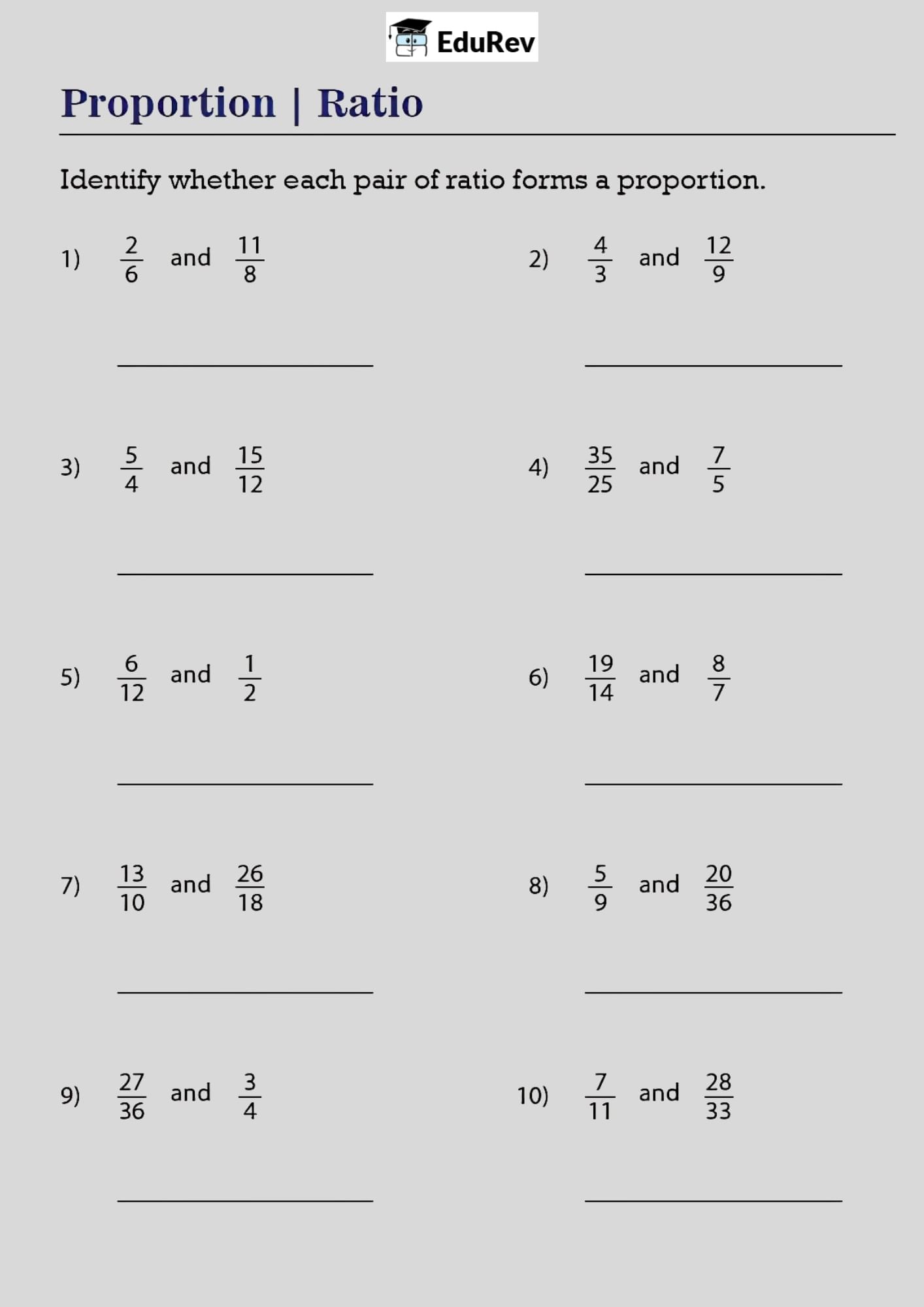Class 8 Exam > Class 8 Notes > Mathematics Class 8- New NCERT (Ganita Prakash) > Visual Worksheet: Proportion and Ratio
Visual Worksheet: Proportion and Ratio | Mathematics Class 8- New NCERT (Ganita Prakash) PDF Download

The document Visual Worksheet: Proportion and Ratio | Mathematics Class 8- New NCERT (Ganita Prakash) is a part of the Class 8 Course Mathematics Class 8- New NCERT (Ganita Prakash).
All you need of Class 8 at this link: Class 8
|
20 videos|133 docs|11 tests
|
FAQs on Visual Worksheet: Proportion and Ratio - Mathematics Class 8- New NCERT (Ganita Prakash)
| 1. What are the basic concepts of ratio and proportion? |  |
Ans. A ratio is a relationship between two numbers that indicates how many times the first number contains the second. It is expressed in the form of a fraction or with a colon (e.g., 3:4). Proportion, on the other hand, is an equation that states that two ratios are equal (e.g., 3:4 = 6:8). Understanding these concepts is essential for solving problems related to comparing quantities and scaling.
| 2. How do you simplify a ratio? |  |
Ans. To simplify a ratio, divide both terms by their greatest common divisor (GCD). For example, to simplify the ratio 8:12, first find the GCD, which is 4. Then divide both terms: 8 ÷ 4 = 2 and 12 ÷ 4 = 3. Thus, the simplified ratio is 2:3.
| 3. How can proportions be used in real-life situations? |  |
Ans. Proportions are widely used in everyday life, such as in cooking (adjusting recipes), in finance (calculating interest rates), and in construction (determining scale models). For instance, if a recipe requires 2 cups of flour for every 3 cups of sugar, you can use proportions to adjust the ingredients based on how many servings you need.
| 4. What is the difference between direct and inverse proportion? |  |
Ans. In direct proportion, as one quantity increases, the other quantity also increases at the same rate (e.g., distance and time when speed is constant). In contrast, inverse proportion means that as one quantity increases, the other decreases (e.g., speed and time when distance is constant). Understanding these differences helps in solving various mathematical problems effectively.
| 5. What are some common mistakes to avoid when working with ratios and proportions? |  |
Ans. Common mistakes include forgetting to simplify ratios, incorrectly setting up proportions, and failing to check for unit consistency (e.g., mixing different measurement units). It's important to carefully review each step and ensure that all terms are correctly represented to avoid errors in calculations.
Related Searches















